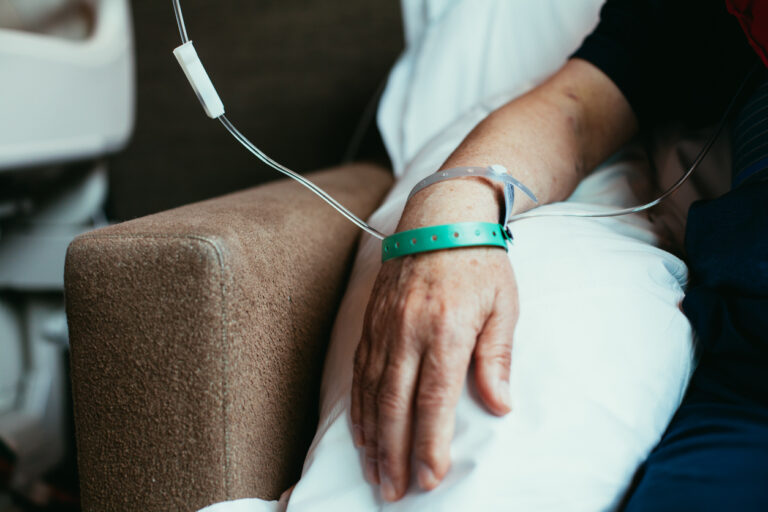by SAM STRANGEWAYS
Patients in Bermuda who are diagnosed with cancer can expect to be offered a range of treatment options – with many available on island. Here we look at some of the most common types of treatment, how they work and what side effects can be expected.
SURGERY can be used to diagnose cancer, such as when a biopsy is performed. This involves removing a small sample of tissue to test in a lab. Staging surgery is used to explore the area around the cancer and determine how advanced it is.
Curative surgery is often used when cancer is found in only one part of the body. The aim is to completely remove the cancer and it may be the only treatment used or it may be used along with other treatments.
Conventional surgery involves a doctor cutting into and removing, repairing or replacing parts of the body affected by cancer. But there are newer, less invasive techniques, such as laser surgery, which uses a powerful beam of light energy to target cancer, and cyrosurgery, which involves freezing abnormal cells.
Other kinds of surgery for cancer patients include “de-bulking” a tumour to reduce its size and restorative surgery, such as breast reconstruction after a mastectomy. There may be side effects from surgery, though most are unlikely to be life-threatening.
The American Cancer Society says: “Possible complications during surgery may be caused by the surgery itself, drugs used, and your overall health. Generally speaking, the more complex the surgery is, the greater the risk of side effects.”
CHEMOTHERAPY uses cytotoxic drugs to kill cancer cells and its effectiveness varies significantly. According to the ACS, chemo, as it is often called, is viewed as a systemic treatment, meaning the drugs travel throughout the body, killing cancer cells that have spread – or metastasised – to parts of the body far away from the original tumour.
The aim is to cure the cancer, although there is no guarantee. The society says: “It doesn’t always work out that way. It often takes many years to know if a person’s cancer is really cured.”
Chemo is also used to control cancer, where a cure is not possible. It can shrink tumours and stop cancer from growing and spreading, which can help a patient feel better and live longer.
Chemotherapy can also be used to ease the symptoms of cancer, where it is at an advanced stage. For example, if a patient has a tumour which is causing pain or pressure, chemo can help to shrink it and ease those symptoms.
The treatment can involve one drug or a combination of drugs and there can be side effects, such as hair loss, nausea and tiredness. Chemotherapy is provided by Bermuda Hospitals Board at its oncology department.
RADIATION is one of the most common treatments for cancer, more than half of those diagnosed with the disease receive it, according to the ACS. It works by using high-energy particles or waves to destroy or damage cancer cells.
Radiation makes small breaks in the DNA inside cells and those breaks keep cancer cells from growing and dividing and causes them to die.
Unlike chemotherapy, it is a localised treatment which targets only the part of the body needing treatment.
Radiation therapy has been available on the island since Bermuda Cancer and Health Centre opened its state-of-the-art unit in 2017, with the aim of providing treatment annually to about 200 Bermuda patients who would otherwise have had to go overseas.
The centre, which works in partnership with the US-based Dana-Farber Brigham Cancer Center, uses a True Beam™ linear accelerator to give the highest radiation dose in shorter sessions.
It provides targeted radiation that spares healthy tissue and can hone in on even the smallest lesions.
The ACS says it has long been known that radiation therapy can slightly raise the risk of getting another cancer but that mostly the risk of this is “small and is outweighed by the benefit of treating the cancer”.
A STEM CELL OR BONE MARROW TRANSPLANT is used to treat some kinds of cancer. This procedure replaces bone marrow cells that have been destroyed by cancer or destroyed by chemotherapy or radiation used to treat cancer.
In some cases, stem cells from a donor are transplanted into the cancer patient and they find and kill cancer cells better than the immune cells of the person with the disease ever could. According to the ACS, this is called the “graft-versus-cancer”.
There can be side effects, including the risk of serious infection after the transplant.
Researchers are constantly looking for new ways to combat cancer and successes in clinical trials are regularly reported on by the media.
One recent example was in June this year, when the New York Times reported on a small clinical trial involving 18 rectal cancer patients taking the new drug dostarlimab. The cancer vanished in every patient: a result described by the NYT as “astonishing”. Further trials of the drug are expected.
Cancer patients sometimes seek alternative therapies to try to beat the disease. The AWS warns: “Choosing alternative treatment instead of mainstream cancer treatments might put you at serious risk.”
The society urges patients to talk to their doctor before opting for an alternative rather than mainstream treatment.
The NHS in Britain says: “No alternative therapies have ever been proven to cure cancer or slow its growth.”
The US-based Mayo Clinic medical research centre notes that while alternative therapies cannot cure your cancer, some may help relieve symptoms. These include acupuncture, hypnosis and massage.

